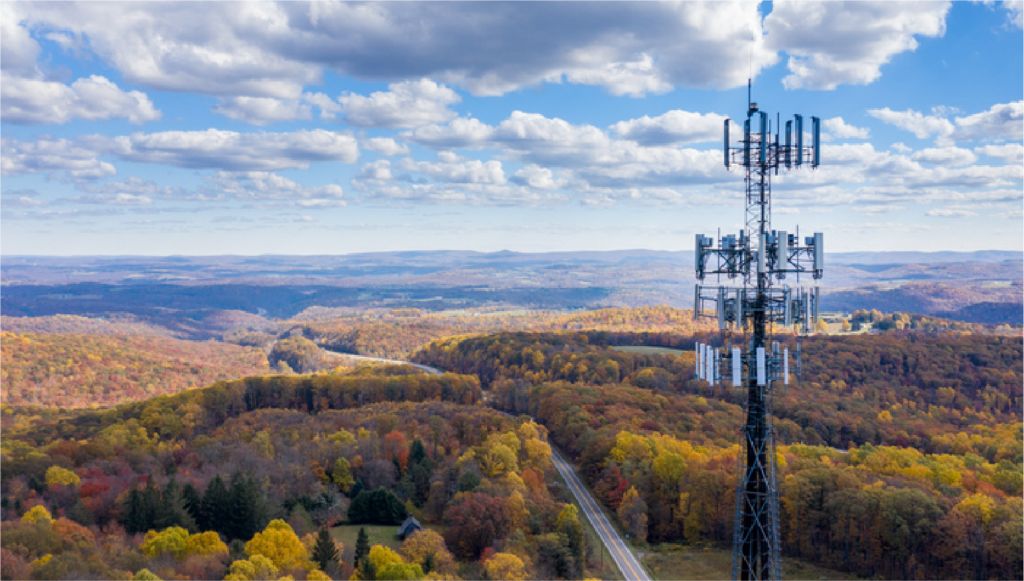The ongoing 3G sunset marks a significant turning point for telecommunications networks worldwide. As mobile network operators shut down their legacy 3G networks, businesses that rely on Internet of Things (IoT) devices and systems must adapt to newer technologies such as 4G, 5G, and Low Power Wide Area Networks (LPWAN) like NB-IoT and LoRaWAN. While this transition promises faster speeds and improved connectivity, it also poses challenges for companies still dependent on 3G infrastructure.
In this article, we’ll explore what the 3G sunset means for IoT connectivity, how businesses can effectively transition from 3G to 4G, 5G, and LPWAN technologies, and why Wagtel is uniquely positioned to help companies navigate this crucial change.
What is the 3G Sunset and Why Does It Matter?
The 3G sunset is more than just a shift in mobile network technology—it has profound implications for IoT devices and the businesses that rely on them. Many IoT solutions, from smart meters and fleet tracking systems to industrial sensors, were designed to operate on 3G networks. As these networks are gradually phased out, devices that are still reliant on 3G will lose connectivity, potentially disrupting operations and communication.
The challenge for businesses lies in ensuring uninterrupted service for their IoT ecosystems. Without timely action, companies could face significant downtime, loss of data, and even service outages, all of which could impact critical operations. The transition from 3G to 4G, 5G, and LPWAN technologies not only resolves these connectivity issues but also offers enhanced network performance, higher speeds, and greater capacity to manage more connected devices.
However, this transition must be carefully managed, as it involves not only upgrading hardware but also ensuring that existing systems are compatible with the new network technologies. Wagtel, with its expertise in IoT connectivity, plays a crucial role in helping businesses navigate these challenges, offering seamless solutions to future-proof your IoT infrastructure.
How the 3G Sunset Impacts IoT Connectivity and the Transition to 4G, 5G, and LPWAN

As the 3G sunset approaches, businesses must plan their transition to more advanced network technologies like 4G, 5G, and Low Power Wide Area Networks (LPWAN). Each of these technologies offers distinct advantages that make them suitable for different IoT use cases.
- 4G LTE: For businesses that require reliable and widespread coverage, 4G is a natural choice. It provides significantly faster data speeds than 3G, making it ideal for applications where real-time data transmission is crucial, such as video surveillance or mobile point-of-sale systems. For more insight into why 4G is an ideal solution for IoT applications, you can explore our article on Why 4G Connectivity is Ideal for IoT Solutions.
- 5G: As the newest and most advanced mobile network, 5G promises ultra-fast speeds, low latency, and the ability to support a massive number of connected devices. It is perfect for IoT applications that demand high bandwidth and near-instantaneous communication, such as autonomous vehicles and smart cities. For a deeper look into the current state of 5G in IoT and the challenges it faces, check out our article on Why 5G Isn’t More Prominent in IoT and What’s Holding It Back.
- LPWAN: For businesses with IoT devices that require long battery life, broad coverage, and low data rates, LPWAN technologies like NB-IoT and LoRaWAN offer the ideal solution. These networks are especially suited for applications such as smart meters, environmental monitoring, and asset tracking in remote areas.
Successfully navigating the transition from 3G to 4G, 5G, and LPWAN requires a clear understanding of your IoT infrastructure and the specific needs of your devices. Partnering with a company like Wagtel ensures that your migration is smooth and efficient. Wagtel provides comprehensive IoT connectivity solutions that support NB-IoT, LoRaWAN, and other key technologies, helping you choose the best network for your devices and ensuring that your IoT infrastructure remains future-proof.
Steps to Transition from 3G to 4G, 5G, and LPWAN After the 3G Sunset

Successfully transitioning from 3G to more advanced networks like 4G, 5G, and LPWAN requires careful planning and execution. Below is a step-by-step guide that outlines the key actions businesses should take to ensure a smooth migration and minimize disruption to their IoT operations.
Step 1: Evaluate Your Current IoT Infrastructure
Begin by assessing your current IoT devices and systems to identify which ones are still reliant on 3G networks. Conduct a thorough audit to determine which devices will be affected by the 3G sunset and categorize them by importance and functionality. This will help you prioritize the migration and allocate resources effectively.
Step 2: Determine the Best Technology for Your Needs
Not all IoT devices require the same network capabilities. Based on your business’s specific needs, decide whether 4G, 5G, or LPWAN (such as NB-IoT or LoRaWAN) is the right technology for each application:
- For high-bandwidth, low-latency applications, such as video surveillance or connected vehicles, 5G may be the best option.
- For applications that require widespread coverage and reliable data transmission, such as logistics and fleet tracking, 4G is a strong choice.
- For IoT systems that operate in remote locations and require energy efficiency, LPWAN technologies like NB-IoT or LoRaWAN will be ideal.
Step 3: Upgrade or Replace Affected IoT Devices
Once you’ve determined the appropriate technology for each device, the next step is to ensure that your IoT devices are compatible with the selected network. Some older devices may require hardware upgrades, while others might need to be replaced entirely. Work with your IoT solutions provider, such as Wagtel, to facilitate this process and minimize costs where possible by exploring firmware updates for compatible devices.
Step 4: Plan for Network Integration
Integrating new technologies into your existing infrastructure can be complex, especially if you’re working with a combination of 4G, 5G, and LPWAN networks. Ensure that your internal systems, such as IoT platforms and cloud services, can communicate seamlessly with the new networks. Wagtel offers integration services that help you smoothly incorporate these new technologies without interrupting your operations.
Step 5: Test and Optimize Your New IoT Network
Before fully deploying your new network, it’s essential to conduct thorough testing to ensure that all devices are working as expected. This includes monitoring data transmission, testing latency, and evaluating overall performance. Optimization may be required to ensure that your IoT devices operate at peak efficiency in the new environment. Wagtel can assist with testing and ongoing optimization to make sure the transition is successful.
Step 6: Train Your Team on New Technology
Ensure that your staff is familiar with the new network technologies and the operational changes that come with them. Training is key to making sure that your team can manage, monitor, and troubleshoot any issues that arise post-migration. Wagtel provides support and training to help businesses adapt to the new systems with ease.
Step 7: Monitor and Maintain Network Performance
The final step is to implement a robust system for monitoring and maintaining your network. Regular performance checks will ensure that your IoT infrastructure remains functional and efficient after the transition. Wagtel offers ongoing support to keep your network running smoothly, providing monitoring tools and assistance to address any issues that arise over time.
How Wagtel Helps You Transition from 3G to 4G, 5G, and LPWAN

As the 3G sunset draws closer, choosing the right partner to guide your IoT migration becomes crucial. Wagtel is uniquely positioned to help businesses seamlessly transition from 3G to 4G, 5G, and LPWAN technologies, thanks to our extensive expertise in telecommunications and IoT connectivity.
At Wagtel, we offer a wide range of solutions that are tailored to meet the specific needs of businesses undergoing this transition:
- Network Assessment: We perform a comprehensive evaluation of your current IoT infrastructure, identifying which devices are dependent on 3G and determining the best upgrade path, whether it’s to 4G, 5G, or LPWAN technologies like NB-IoT or LoRaWAN.
- IoT Device Compatibility: Migrating to new networks can often involve upgrading hardware. Wagtel helps ensure that your IoT devices are compatible with the latest technologies, minimizing disruption and avoiding costly replacements. We also work with you to implement firmware updates where possible to extend the life of your existing devices.
- Custom Connectivity Solutions: Wagtel provides tailored connectivity solutions based on your business requirements. Whether you need low-latency 5G for real-time data applications or energy-efficient LPWAN for remote monitoring, our team ensures that your transition is smooth and future-proof. Our technology-agnostic approach guarantees flexibility, making Wagtel the ideal partner for navigating the 3G sunset.
- Seamless Implementation: Our implementation services cover everything from device provisioning to network integration. We take care of the technical complexities, allowing you to focus on your business without worrying about connectivity issues.
By partnering with Wagtel, businesses can navigate the complexities of the 3G sunset with confidence, ensuring that their IoT systems remain operational, efficient, and ready for the future. We make sure that your transition from 3G to 4G, 5G, and LPWAN is not just smooth but also optimized for long-term success.
Best Practices for Preparing for the 3G Sunset
To ensure a successful migration from 3G to 4G, 5G, and LPWAN technologies, businesses need to follow best practices that will help minimize risks, reduce downtime, and optimize the performance of their IoT infrastructure. Below are some key recommendations for preparing your business for the 3G sunset.
1. Start Early and Plan Ahead
The first step to a successful migration is starting early. Waiting until the last minute to address the 3G sunset can lead to rushed decisions, service disruptions, and unexpected costs. By planning ahead, businesses can conduct a thorough assessment of their IoT needs and create a clear roadmap for transitioning to newer technologies.
2. Prioritize Critical Systems
Not all IoT devices have the same level of importance. It’s essential to prioritize critical systems—those that are vital to your operations or customer service—before addressing non-critical systems. This ensures that the most important parts of your infrastructure are ready for the switch, reducing the risk of major operational failures.
3. Ensure Compatibility with New Networks
It’s vital to ensure that your existing IoT devices are compatible with 4G, 5G, or LPWAN networks. Many devices built for 3G will not work on newer networks without upgrades or replacements. Assess the compatibility of each device and, where possible, explore firmware updates or cost-effective hardware replacements.
4. Optimize for Future Growth
When transitioning to new technologies, consider the future needs of your business. The 3G sunset offers an opportunity not only to upgrade but to optimize your IoT infrastructure for future growth. 5G and LPWAN technologies provide scalability, allowing your business to add more devices and manage larger networks with greater efficiency. Future-proofing your IoT systems will save costs and reduce the need for frequent updates.
5. Leverage Expert Support
Migrating from 3G is a complex process that requires careful planning and execution. Working with a trusted partner like Wagtel ensures that your business has access to expert guidance, from initial network assessments to full-scale implementation and ongoing support. Wagtel provides end-to-end services to make the transition smooth, secure, and cost-efficient.
6. Test and Monitor the New System
Once your IoT systems have been migrated, continuous testing and monitoring are essential. By regularly testing connectivity, data transmission, and device performance, businesses can catch and address potential issues early. Additionally, ongoing monitoring helps ensure that the new network infrastructure performs as expected, maintaining high levels of efficiency and uptime.
Ensuring a Smooth Transition Post-3G Sunset
The 3G sunset presents both challenges and opportunities for businesses that rely on IoT connectivity. While the phase-out of 3G networks may disrupt existing systems, it also provides a chance to upgrade to more advanced technologies like 4G, 5G, and LPWAN, which offer improved performance, greater capacity, and enhanced reliability.
By preparing early, assessing your infrastructure, and following best practices, businesses can navigate this transition smoothly and future-proof their IoT ecosystems. Partnering with a trusted provider like Wagtel ensures that the migration process is seamless, with comprehensive support every step of the way—from network assessments and device upgrades to integration and ongoing monitoring.
As the telecommunications landscape continues to evolve, Wagtel is here to help businesses stay connected, ensuring that they can thrive in the post-3G world with efficient, scalable, and reliable IoT solutions. Get in touch with our team today to discuss how we can help you seamlessly transition from 3G to 4G, 5G, or LPWAN technologies and future-proof your IoT infrastructure.






